Bright futures: Led by Miles Russell, First Coast junior golf is perhaps at its highest level
The First Coast is in a Golden Age for junior golf, and that’s saying something.
An area that has produced junior players who went to win major championships, Players championships, college All-American honors and national amateur championships can now make a case that it’s the hot spot for junior golf in the entire country, largely due to three players: Miles Russell of Jacksonville Beach, Phillip Dunham of Ponte Vedra Beach and Tyler Mawhinney of Fleming Island.
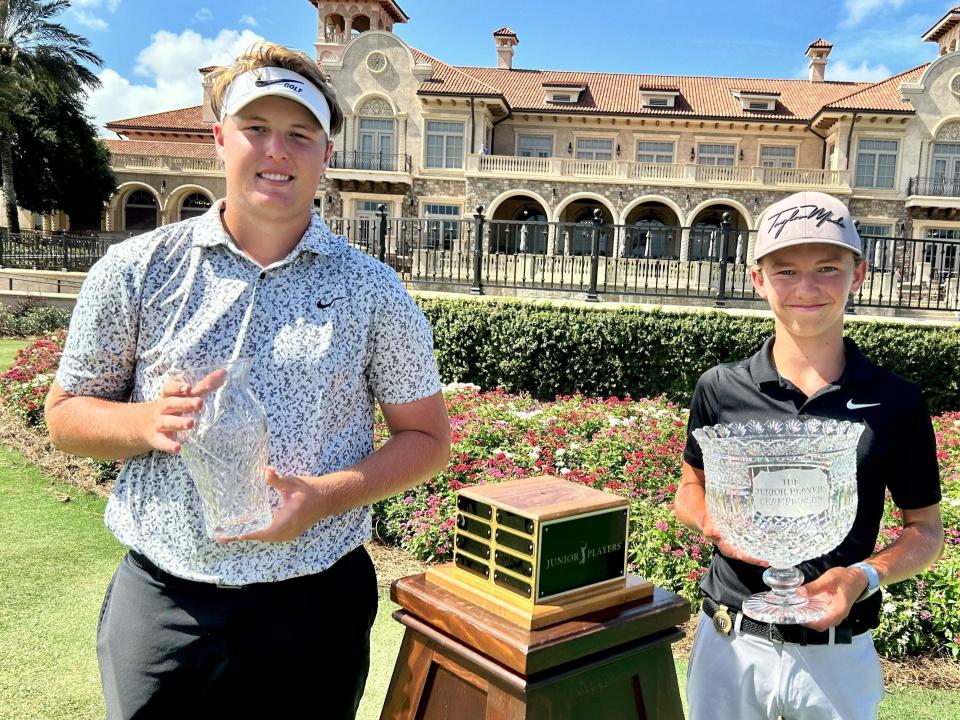
They are the only Florida residents who have made the inaugural United States Golf Association Junior National team and led by Russell’s victory, all three finished among the top six in the 2023 Junior Players Championship.
Russell currently is first on the American Junior Golf Association Rolex Rankings and is the reigning AJGA Player of the Year after winning the Junior Players, the Junior PGA and two other AJGA titles. He was the first AJGA boys Player of the Year from the First Coast since David Duval in 1989.
Dunham is 15th and Mawhinney 18th on the Rolex Rankings and all three are inside the top 10 on the U.S. Junior Presidents Cup points list (Russell is fourth, Dunham sixth and Mawhinney 10th) with four months to go before the matches at Royal Montreal.
Russell made national news earlier this month when he became the youngest player in history at the age of 15 to make the cut in a Korn Ferry Tour event in Lakewood Ranch, then became the youngest to finish among the top 20 and qualify for the next week’s tournament.
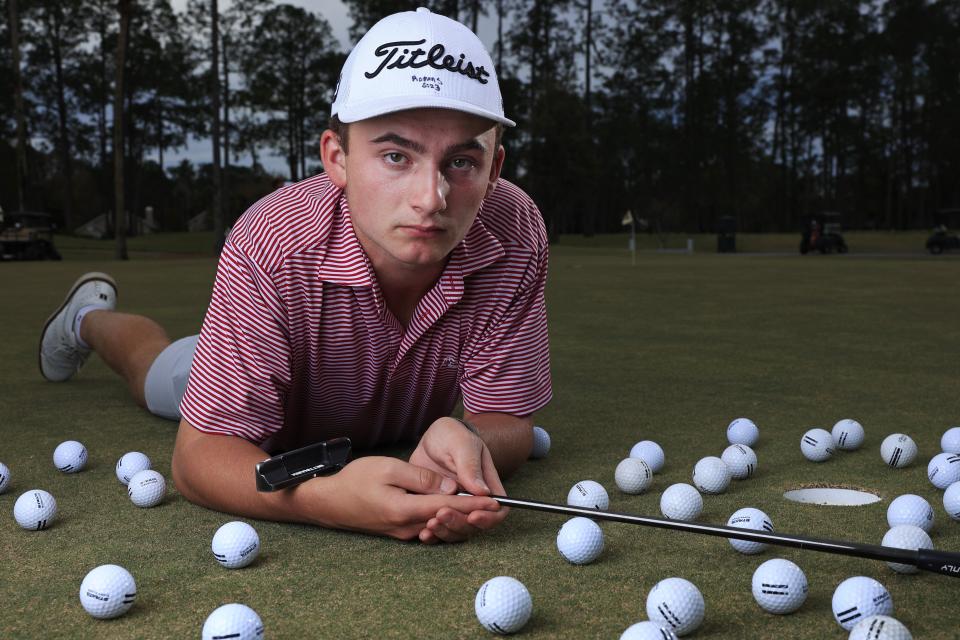
Here’s the scary part: Dunham and Mawhinney are on track for high school graduation in 2026, and Russell in 2027. And they’ve still got a full summer to more happen in 2024 with schedules that will include USGA national tournaments, and AJGA and Florida State Golf Association events.
First Coast had three high school team champions
Led by Mawhinney’s individual title, Fleming Island High School won the school’s first FHSAA state championship last fall in Class 3A, one of three team titles won by First Coast schools. Ponte Vedra High’s boys won their ninth state title in a row in Class 2A and Beachside’s girls won the 2A state title, a first for that school in its second year.
It’s the first time three First Coast schools won state championships in the same year since the state went to multiple classifications in golf in 1994.
Mawhinney was named the Florida Dairy Farmers Mr. Golf and late in the year won the AJGA Rolex Tournament of Champions.
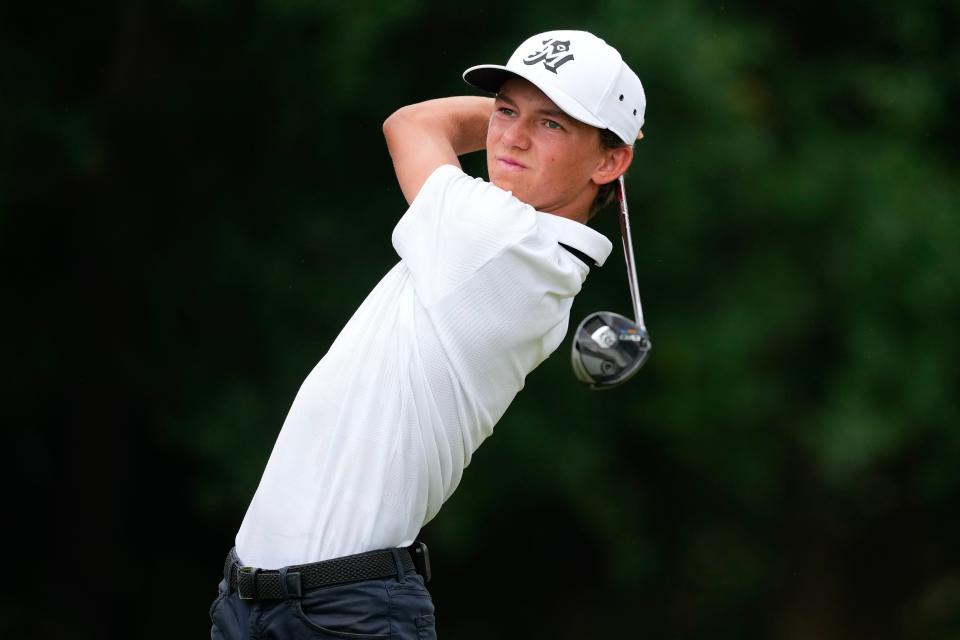
Colton Swartz of Fleming Island won the Florida Junior Boys 16-18 title last summer and Luke Balaskiewicz of Jacksonville, in addition to winning district and regional titles and tying for fifth in the 1A state tournament for Bolles last year, recently won his first Florida Junior Tour event. Henry Robards and Cam Goldknopf led Episcopal to finishes of second and third in the last two Class 1A state tournaments.
Sofia Rivera of St. Augustine led Beachside to its state title with a tie for second and has five top-three FJT finishes.
And watch out for 11-year-old Lily Wachter of St. Augustine, who won her age group in the National Drive, Chip and Putt national finals at Augusta National and has a victory and four top-five finishes in her first six FJT starts.
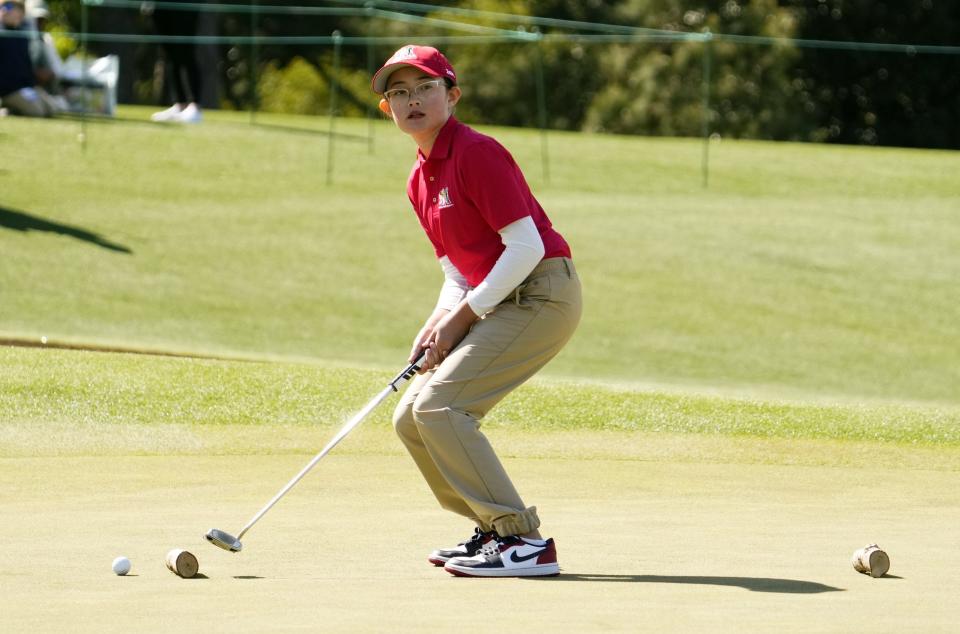
“There’s no doubt it’s a great time for junior golf,” said Jack Aschenbach, the executive director of the North Florida Junior Golf Foundation, where Russell, Dunham and Mawhinney played their earliest stages of junior golf, along with almost every other player who is currently making splashes on the state and national scene. “I think the depth has never been better.”
And Aschenbach said more good players are on the way. He has a record number of more than 400 members of the NFJG and a record 48 players are currently at the organization’s “Elite” level, with scoring averages of 84 and below.
First Coast juniors have a long history of success
Junior golfers from the area have established a decades-long track record that has gone beyond the local level.
Mawhinney won the 24th individual state high school title by a First Coast player, dating back to Elliott Martin of Jackson in 1928. Among the other state champions have been Len Mattiace of Nease (1984), who won twice on the PGA Tour, Julian Suri of Bartram Trail (2007 and 2008), who climbed as high as 62nd on the World Golf Rankings and Taylor Funk of Ponte Vedra (2013), who is on the Korn Ferry Tour.
Mattiace's state title began a string of Nease players who followed suit, Ben Taylor (1992), Vince Covello (2000) and Adam Wallace (2001). Toby Ragland (2003) became the first Bartram Trail player to win a state title.
Led by the Ponte Vedra High boys with nine titles, five First Coast high schools have combined for 22 state championships.
Duval, who went on to win 13 PGA Tour titles, the 1999 Players and the 2001 British Open, won the U.S. Junior Boys in 1989.
When Russell won the Future Masters 11-12 division in 2020, he became the sixth First Coast winner of that junior event in Dothan, Ala., which began in 1950. Billy Tuten of Palatka, Blayne Barber of Lake City, Bubba Dickerson of Hilliard and Carl Ste.-Marie of Lake City all won multiple Future Masters age-group titles.
When Swartz won the Florida Junior Boys last summer, he became the 10th First Coast winner. Barber won the 16-18 division in 2006 and 2008 (the latter at Timuquana in a memorable duel with Tyson Alexander) and other area winners are cousins Josh McCumber (1990) and Tyler McCumber (2006), Mattiace (1982) and Tuten (1976).
Four players have won the Florida Junior Girls, with Kaitlyn Schroeder of Jacksonville going back-to-back in 2019 and 2020.
Past Junior players are at elite college levels
The recent accomplishments are coming just after an impressive run by First Coast girls junior players. Schroeder, now at Alabama, followed her two Florida Junior Girls titles by winning the First Coast Women’s Amateur in 2021, reached the quarterfinals of the U.S. Junior Girls later that summer and was the AJGA Player of the Year in 2022.
Chloe Schiavone (a starter at Notre Dame) won the Florida Junior Girls in 2018. Elizabeth Kondal (now playing at Rollins) and Tori Mouton (North Carolina A&T) joined Schroeder in winning the First Coast Women’s Amateur as junior players.
Nancy Cox had two top-five finishes in the Class 2A state tournament for Ponte Vedra High and tied for second in the 2023 tournament. She is headed for Florida Atlantic.
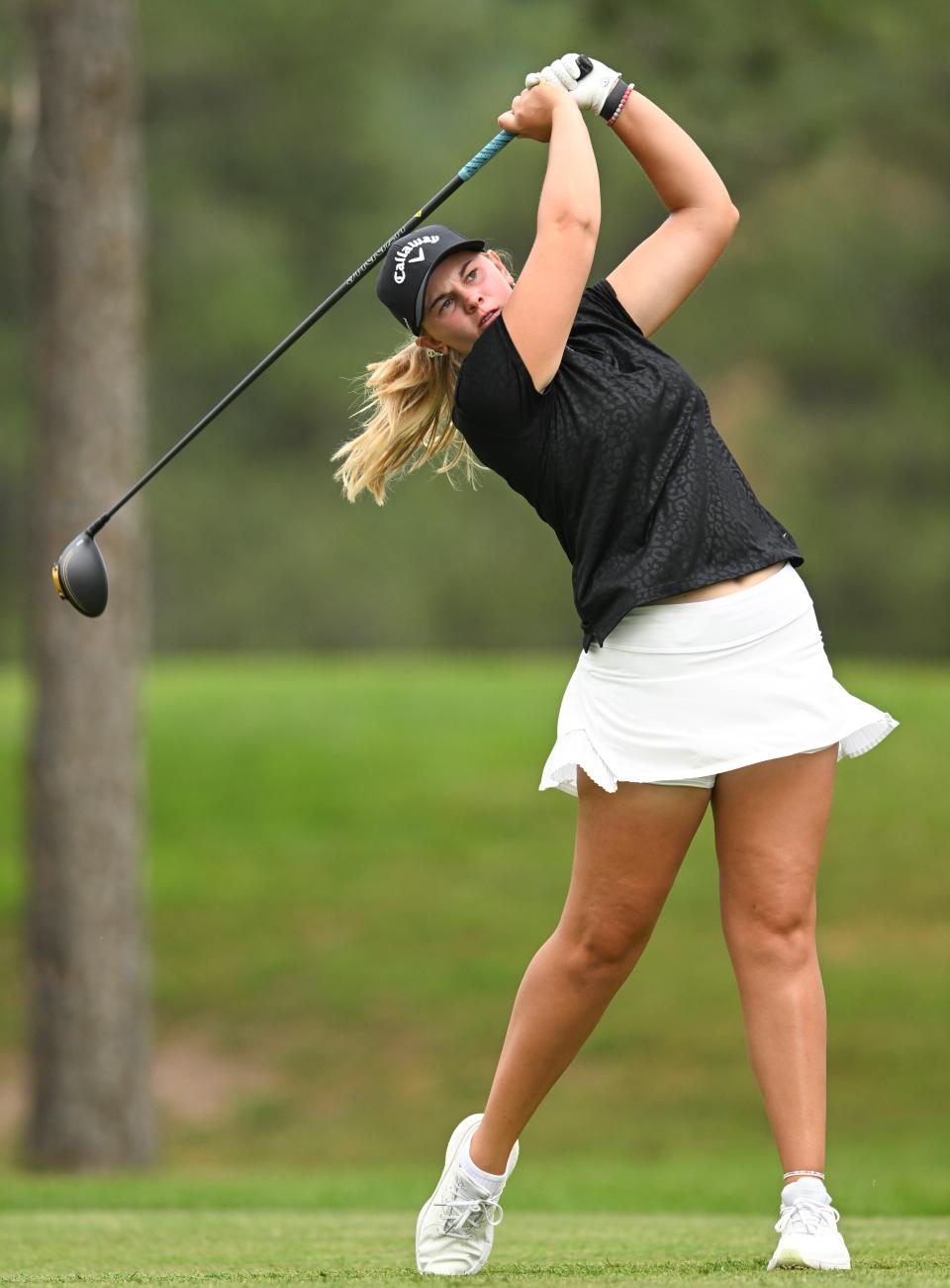
Three-fifths of the starting lineup that the University of North Florida took to the NCAA Championship last week are veterans of First Coast junior and high school, Andrew Riley (Creekside), Jason Duff (Menendez) and Davis Lee (Ponte Vedra). Riley became the area’s first product to win an NCAA individual title when he captured the Division II title for Palm Beach Atlantic in 2023 and Duff won 2019 Class 2A state title.
Chase Carroll, the Class 2A state runnerup in 2022 to Ponte Vedra’s Brock Blais, made the ASUN All-Freshmen team for the Ospreys. Blais started for Texas-San Antonio as a freshman.
Bud Cauley of Jacksonville was a three-time AJGA All-American before becoming an All-American at Alabama and A.J. Crouch (Florida) and Sean Dale (UNF) used their junior golf resumes to land at college golf powers.
Professional golfers from the First Coast marvel at how good the modern junior golf scene is — and how different the conditions are from when they were at that age.
“You have to think that we’ve got one of the best pockets for junior golf in the country right now,” said Mattiace. “Where else? Dallas? San Diego? I don’t know. I can’t imagine it being any better than it is for our area right now. There’s something good in the water, that’s all I know.”
Juniors benefitting from improved coaching, technology
Perhaps the key factor for a better brand of junior golfer nationwide is the resources players have. They have access to quality instruction at clubs and academies, where their swings are broken down on video and launch monitors and matched to perfect equipment specifications. There are mental coaches and a greater emphasis on nutrition and physical fitness.
“Just look at the TPC Performance Center,” said former PGA Tour player Jeff Klauk, who along with his brother John helped Nease win its first state championship in 1995 and now is watching his son Jackson play at Jacksonville University. “We didn’t have anything like that back then. I think I had good coaches, like Mike Blackburn and Bob Duval but we didn’t know what my clubhead speed was, what my ball speed was. The kids now have access to so much more that can help them get better.”
Klauk said it’s not just golf that has benefited from technology and private coaching.
“I think kids in all sports are getting better,” he said. “Every sport is benefiting from the technology, video and training methods.”
Players can test their games against the best more often
Mark McCumber, one of the top area junior players in the 1960s and the 1988 Players champion, raised another top junior player in his son Tyler (who became an All-American at Florida) and helped his nephew Josh also stand out in junior golf and for the Gators.
McCumber said one of the reasons for the improvement of junior golfers, in addition to coaching and technology, is also the vast amount of playing opportunities.
“There’s the AJGA, the Florida Junior Tour, the USGA events and now you’ve got kids like Miles Russell getting the opportunity to play in professional tournaments,” McCumber said. “The biggest local event was the Jacksonville Junior. We had the Pee Wee World Championship at Rio Pinar in Orlando, the Future Masters in Dothan [Ala.], the state Jaycees tournament in Ocala ... but there simply weren’t the number of places to play kids have now.”
McCumber won the Jacksonville Junior and the International Pee Wee but beyond that, it was a matter of playing and practicing as much as possible at his home course at Hyde Park.
“A lot of it depended on which club pros emphasized junior golf,” he said. “Roland Hurley had a Back-to-School tournament at Brentwood that we all played. Norrie Wright was very good for junior golf at Selva Marina and Beauclerc. Nick Clark at San Jose was good to the juniors. There also weren’t as many courses back then as there are now.”
Steve Melnyk learned to play golf from his parents growing up in Brunswick, Ga., went on to help the Florida Gators win their first national championship, won the 1969 U.S. Amateur and played on the PGA Tour for 13 years.
He said his junior golf was limited not only because there weren't that many tournaments but he was a four-sport athlete in high school and held a summer job beginning at the age of 16. That didn't stop him from achieving success at the highest levels of amateur and college golf and having a solid PGA Tour career until an injury cut it short.
Melnyk said it's possible to attain lofty goals without loading a junior player down with dozens of tournaments per year and hundreds of hours of practice time.
"In a way I'm envious of the number of tournaments the kids today get to play," said Melnyk who won the Jacksonville Junior three times. "But I was playing other sports and working and I didn't play a lot of amateur golf until after I got to Florida. I didn't have the kind of coaching the kids have now but my parents laid down a good base of fundamentals for me and I was always able to figure it out when something went wrong."
Junior players also have more time to practice
Terry Catlett, who won the Jacksonville Junior twice and later played on standout Parker High teams with two-time Tour winner Woody Blackburn and his brother, current JU coach Mike Blackburn, said junior players often ran into resistance.
“There were clubs that wouldn’t let juniors play on Saturday or Sunday mornings, even with their fathers,” he said. “You had to be 18 to play in any of the invitationals. Norrie Wright went to bat for me to play at Selva Marina and after I won their invitational when I was 17, clubs seemed to ease up on that.”
Mattiace and Catlett also touched on another key factor: time. More of the top junior players are being home-schooled or take online classes, freeing up more time for practice.
“We’d get out of school and couldn’t get to the golf course until around 3 p.m.,” Mattiace said. “After the time change in the fall, you wouldn’t have a lot of daylight.”
“Heck, we’re watching the clock in school, then we had to drive to the course,” Catlett said. “High school golf was in the spring then and if you had a nine-hole match and you were the No. 1 player, in the last group, you’re fighting darkness. Most of our playing was in the summer. Now the kids can play and practice all year long and that’s helping them get better.”
The numbers game still works against junior players
The cautionary tale of having more skilled junior golfers is that opportunities at the highest levels of college golf and the PGA or LPGA Tour haven’t increased anywhere close to the same level.
There are fewer than 300 NCAA Division I golf programs, a number that hasn’t changed significantly in recent years. Given the fact that college golf is a non-revenue sport, the number of scholarships (4.5 per team on NCAA Division I teams, 3.6 for Division II and six per women’s team) isn’t likely to increase any time soon.
A combination of 35 players reach the PGA Tour through the Korn Ferry Tour and the PGA Tour Qualifying School (30 Korn Ferry, five qualifiers) every year. The LPGA Tour takes the top 25, plus ties from its national qualifier, and the top five money leaders from the EPSON Tour, for around 30 per year.
John Brooks, who launched the UNF men’s golf program and is now the President of Red Numbers Golf, which helps families of junior golfers manage college placement, said the number of boys junior players ranked by Junior Golf Scoreboard is around 3,000 per year since the COVID-19 pandemic sparked a resurgence in golf participation, an increase of 25 percent over the past 10 years.
“I’d remind players and parents that golf is a marathon,” Brooks said. “Always stay patient and think in the long term. A lot can and will happen as players’ careers progress.”
This is where the coach in Brooks comes out.
“Focus on the process and try to get a little better every season,” he advised junior players.
The elite of First Coast junior golfers are taking that “little better” to heart.
This article originally appeared on Florida Times-Union: Junior golf on the First Coast experiencing a surge in depth, talent

